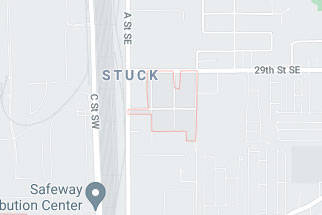King County has more than 100 unincorporated “islands,” not floating at sea, but floating in between the jurisdictions of a city.
According to the King County Annexation Data Book of 2018, which recorded data on the unincorporated regions of the county that have the potential to be annexed by adjacent cities, more than 100,000 people live in these areas with over 40,000 homes.
Some of these “islands” are large with more than 20,000 people living in them, and others, like Auburn’s Totem, are small with less than 200 people.
For some people, there are advantages to living in these regions. Often, residents in unincorporated King County do not have to follow city codes, so homeowners can raise farm animals or use fireworks that otherwise would have been prohibited.
Raising roosters, ducks and goats in Auburn’s Totem, also known as Stuck, was what led Harold G. Olsen to lobby his neighbors against annexation when the proposal to do so showed up on the ballot multiple times during the 2000s.
Stuck remained unincorporated even after Olsen passed away.
Jacob Ritter now owns the property where Olsen lived his whole life, and now Ritter is living with some of the consequences that unincorporation has wrought.
Ritter described the roads and utilities infrastructure in his neighborhood as “garbage,” existing for years without maintenance from a municipality, which Stuck has none to claim.
He said emergency services from Auburn are reluctant to respond to his neighborhood because it is not technically part of the city, forcing county services to come instead.
Emergency response times that would usually only take minutes, Ritter said, now can take up to half an hour.
The house that Olsen built on his property had to be torn down from the rot. Ritter said that building a new one will be hindered by difficulties and delays in the permitting process. He said it took four weeks just to submit his proposal.
Ritter’s property also requires a new septic system, but because he is in an aquifer recharge zone, he is required to build a far more complicated and expensive system. So he began to explore alternatives.
A sewer line maintained by the City of Auburn is only 120 feet away from Ritter’s property, but he said it would cost over $100,000. When he spoke to the city about it, Ritter was told that he would have to build the utility himself.
After hiring a civil engineer and a contractor to do the project, Ritter was told by the city that he would have to do additional work and development just to check underneath his road for other infrastructure. He was told that the City of Auburn did not have records for this unincorporated area.
“At this point I am bleeding money,” Ritter said.
He is unable to currently live on the property.
When Ritter contacted leaders and administrators with the City of Auburn, he was told by Auburn City Councilmember Bob Baggett that the annexation of the “island,” surrounded on all sides by the City of Auburn, was last discussed by the city council and the mayor in 2018.
The leaders had decided not to move forward with any annexation. Jeff Tate, director of community development for Auburn, told Ritter that annexation would be too costly for the city.
Tate cited costs the city would incur for utility and street upgrades, along with the impacts that property owners would experience due to zoning changes and the need to change resident addresses as the primary difficulties with annexation.
Karen Freeman Meyering, senior policy analyst with the King County Executive’s Office, said often cities are expected to annex unincorporated areas as the urban sprawl of a city expands and surrounds these “islands.”
She said these kinds of annexations and mergers of new areas usually happen organically and often present unique difficulties like connecting new sewage lines and other utilities.
Freeman Meyering said the state used to have policy tools imposed by the Legislature to incentivize cities to annex adjacent unincorporated areas. One of those policy tools, which she said no longer exists, was a tax credit program that allowed the sales and use tax revenues from an annexed area, which would typically go to the state, to instead go to the annexing city. This served as both an incentive to annex and a way to cover the costs associated with it.
That tool was implemented by the passage of SB 6686 and later gotten rid of by the passage of SB 5321 in 2009. The estimated value of revenues from areas with the potential to be annexed in King County was over $24,000,000.
Freeman Meyering said even though there is no longer an economic incentive for cities to annex adjacent areas, cities should do it because “it is the right thing to do.”
She said without annexation certain areas in the county are not receiving “urban level” services because the county cannot always meet the needs of residents in this area.



